TLDR:
Making an intercooler upgrade from the stock GTI IC to an aftermarket IC correlated with an average increase of 5 WHP (peak) when using an IS20 and IS38 turbocharger.
Background:
Do I need to upgrade my intercooler?
Mk7 enthusiast
Whether the stock GTI intercooler should be replaced with an aftermarket intercooler comes up frequently. Advice about the decision often centers around an aftermarket IC providing more consistent performance and the stock intercooler beginning to underperform after a single pull.
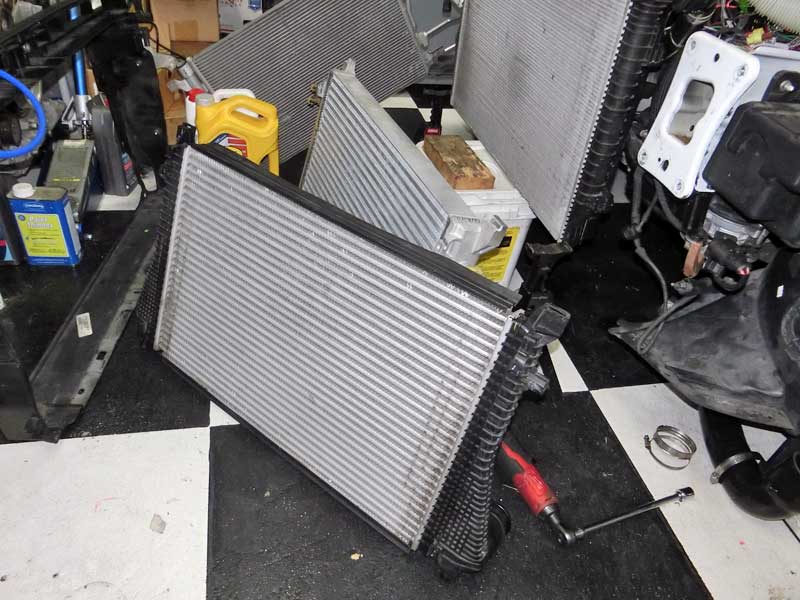
There’s also advice advocating that the stock IC is garbage and an aftermarket intercooler provides massive gains; these more extreme views were addressed in prior comparisons of stock vs. aftermarket IC and a follow-up stock vs. aftermarket comparison.
For this post, I’m jumping straight to comparing power output over a series of pulls when my GTI was equipped with an IS20 and then an IS38.
These two use cases were selected based on poll results showing that approximately 80% of respondents operate their Mk7 with an IS20 or IS38 turbocharger.
Test Process:
The GTI is operated in third gear and accelerated at full throttle from around 2,000 RPM to around 6,500 RPM. This acceleration is repeated several times, and afterward, logged performance data is analyzed and fed into the Virtual Dyno application to estimate wheel horsepower.
Note: Previously, I have discussed the correlation of power estimates using Virtual Dyno with measures taken on a DynoJet dynamometer.
With the IS20 installed, the engine operates using a custom Stage 2 tune. The performance using the stock GTI IC is compared to that of a bicooler based around the Majesty FMIC.
When the IS38 is installed, it is operated using a custom tune, and the stock intercooler is compared with a bicooler combination of the AMS stock location intercooler and a G-Plus FMIC.
Test Results:
IS20 turbocharger
The outside air temperature during the logging session with the stock intercooler was 79 degrees Fahrenheit. While logging with the Majesty bicooler, the temperature was 82 degrees Fahrenheit.
The IS20 turbo boost curve is shown below:
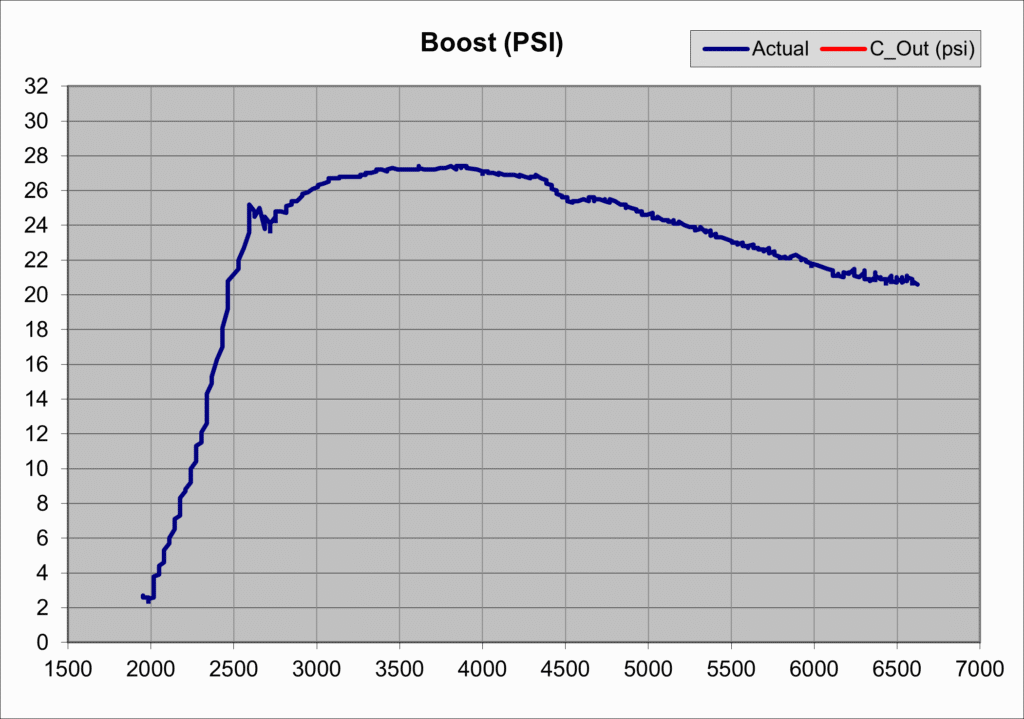
The following charts compare Intake Air Temperature trends over the series of pulls for the stock (L) and Majesty (R) intercoolers.
The peak wheel horsepower during each pull is plotted next:
The following chart shows the peak WHP trends overlayed:
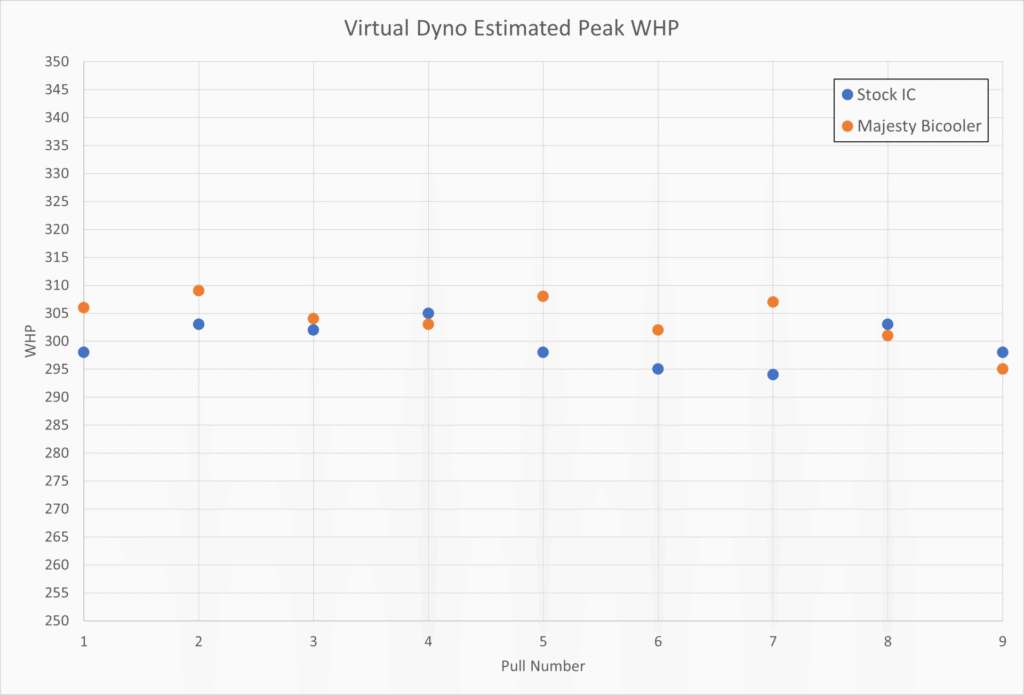
Finally, the average delta between the Majesty and stock intercoolers is calculated for each consecutive pull:
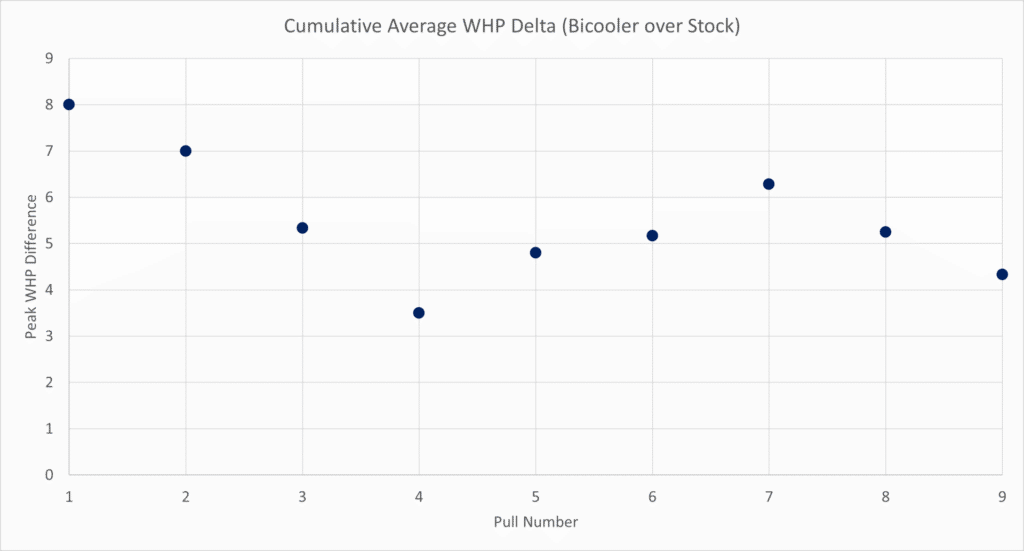
By the test’s latter part, the peak WHP difference varies around 5 WHP.
IS38 turbocharger
The IS38 turbocharger is a prototype Shuenk IS38++ discussed in this post. The larger compressor wheel helps the IS38 hold boost pressure at higher engine speed.
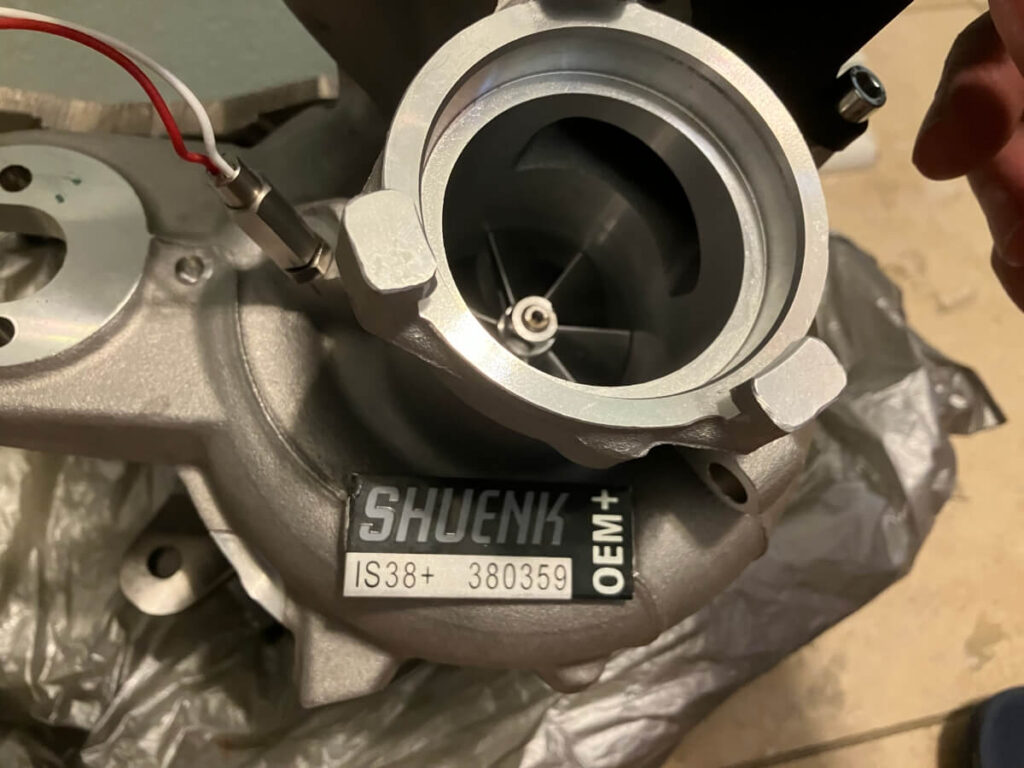
The boost curve of the Shuenk IS38++ with a custom tune is shown below:
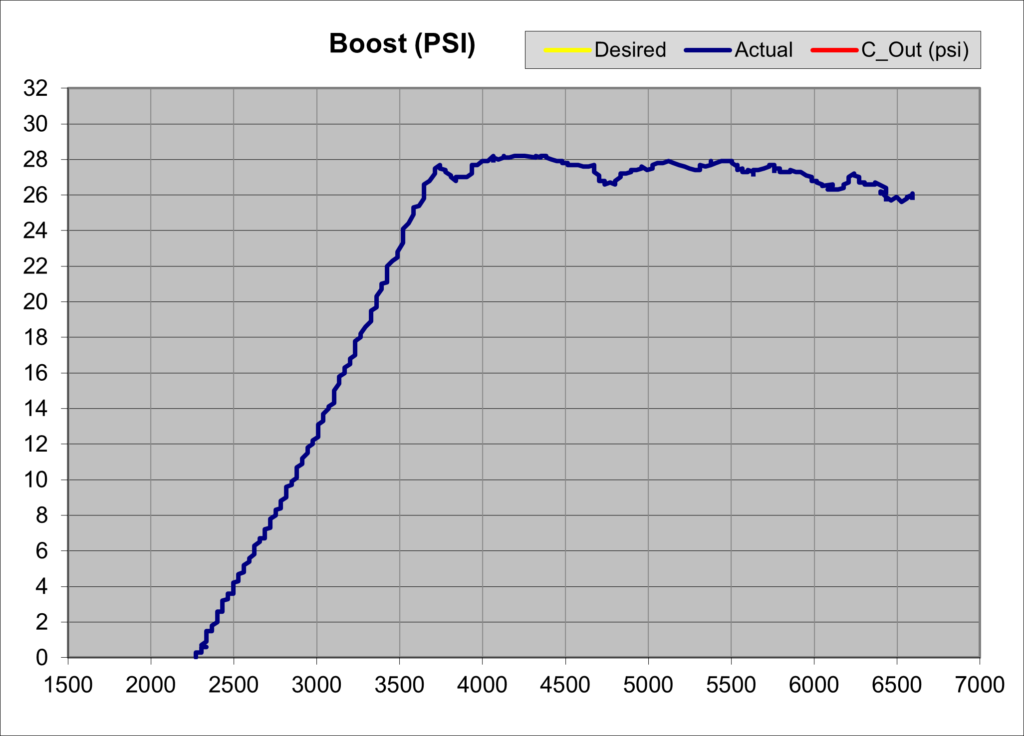
While logging the stock GTI intercooler, the outside air temperature was 81 degrees Fahrenheit, and the temperature while logging the AMS/G-Plus bicooler was 79 degrees Fahrenheit.
Jumping straight to an overlay of the Peak WHP trends:
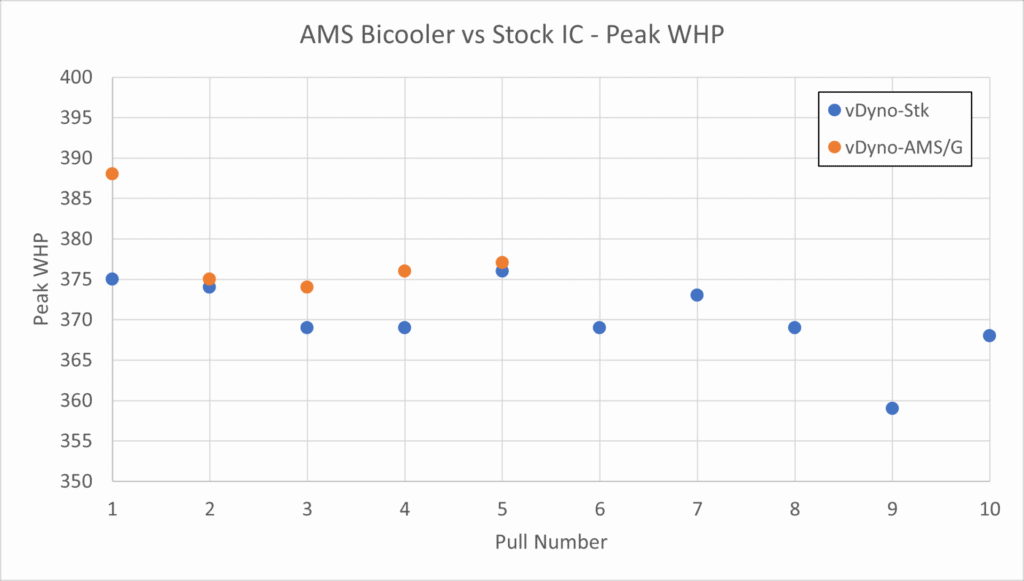
Only five consecutive pulls were made with the AMS/G-Plus combination. The trend of the cumulative average peak WHP Delta is shown below:
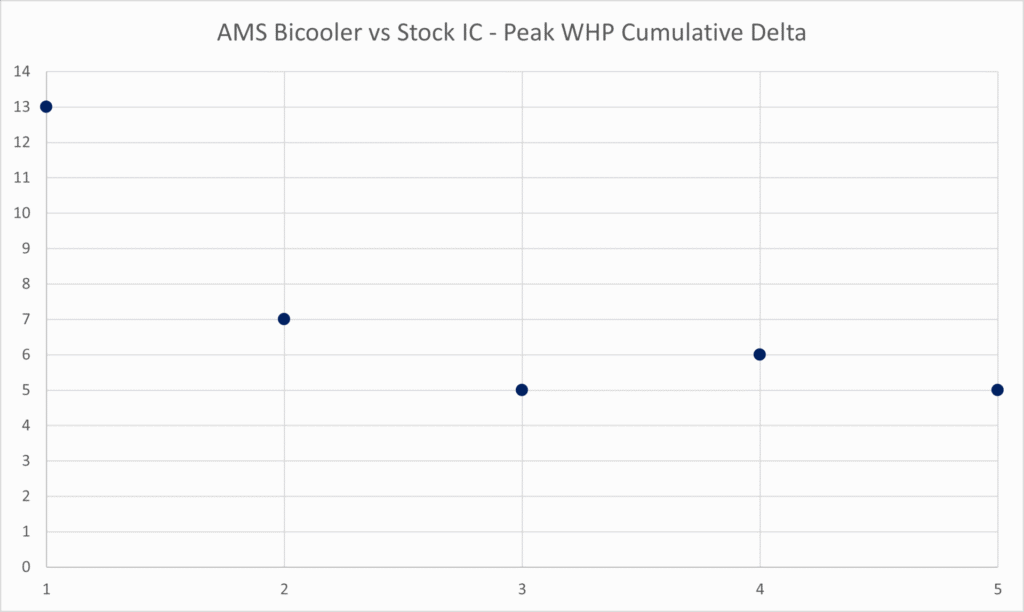
Towards the end, the difference trended around 5 WHP.
Conclusions:
The Mk7 GTI IC was compared with aftermarket intercooler options when operating with an IS20 and IS38 turbocharger.
The average difference in peak wheel horsepower as pulls progressed was around 5 WHP regardless of which turbocharger was used.
Whether the stock intercooler needs to be replaced depends on how the owner operates their GTI and whether the owner values the resulting differences. This post shows how the stock IC supports power output compared to aftermarket options under the abovementioned conditions.

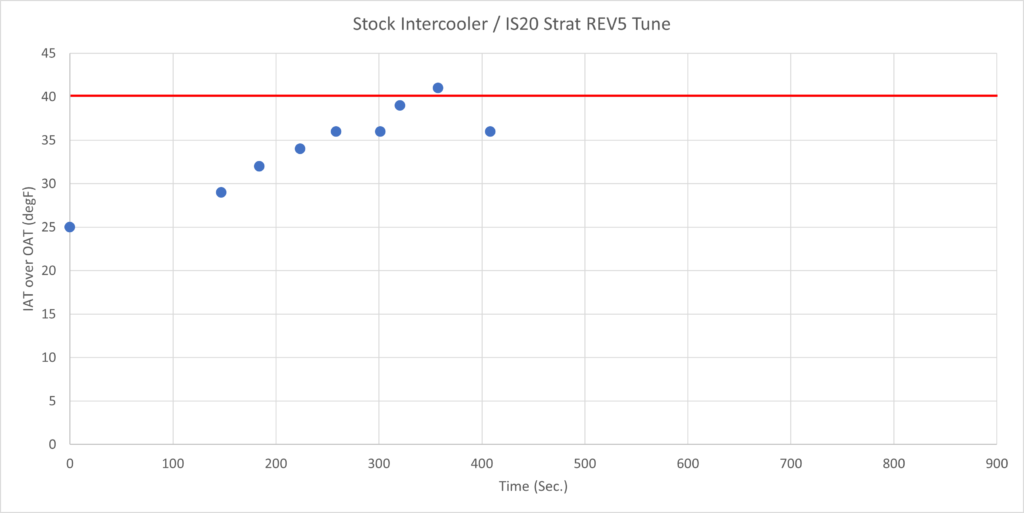
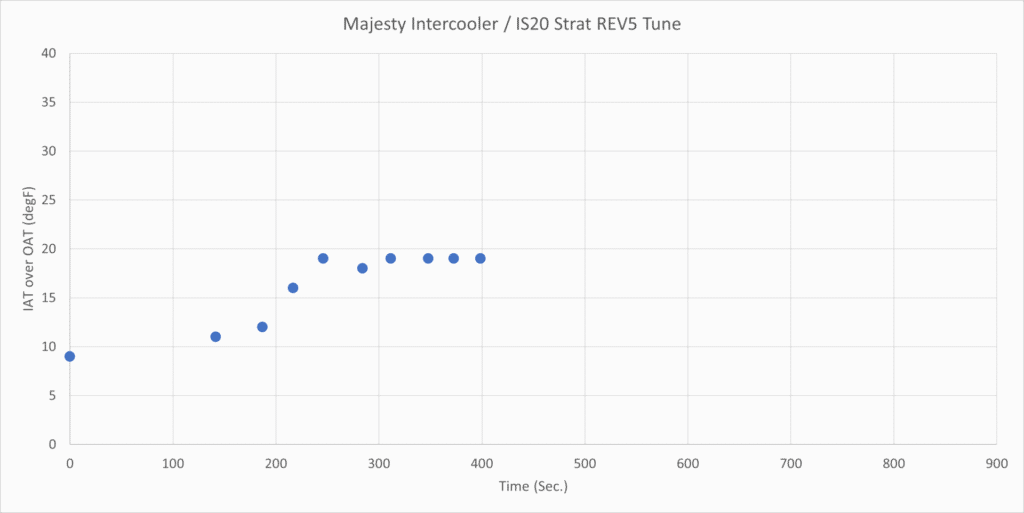
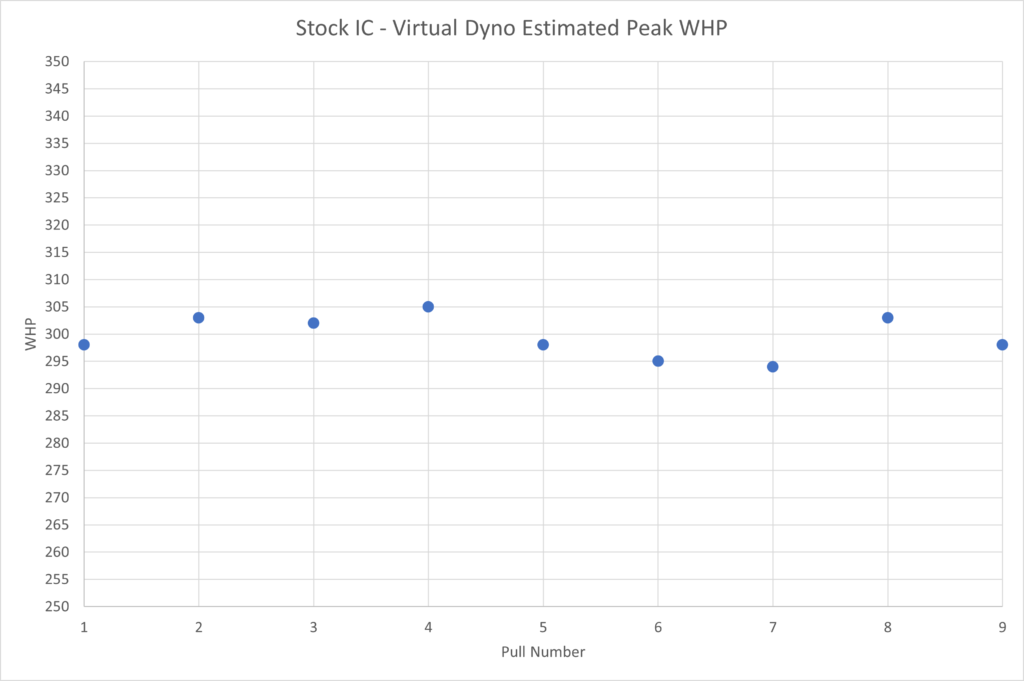
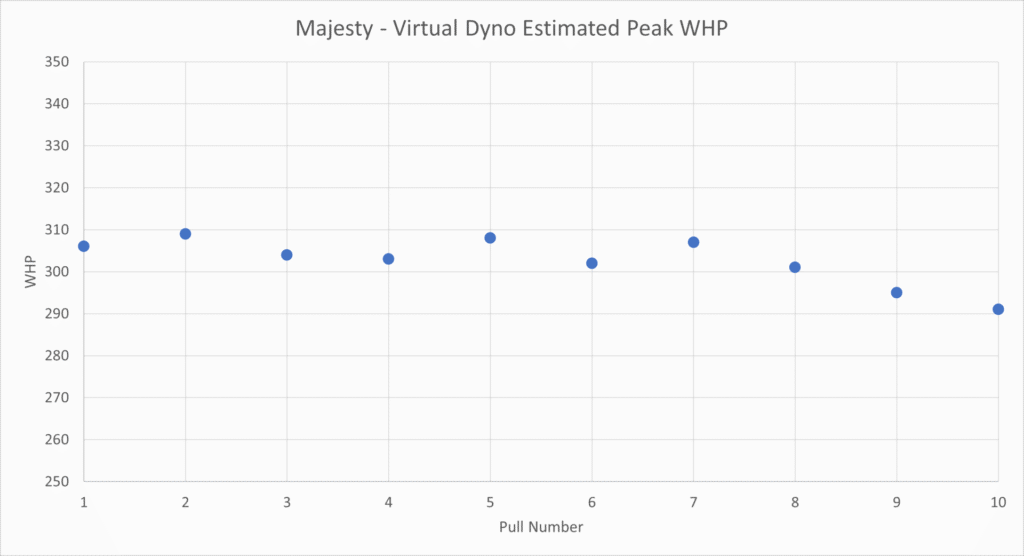
Amazing information. Thank you for this.
It’s interesting though what effect the air temperature would have on delta between ICs.
Would it shrink at lower temperatures? Grow in the summer? Maybe an idea for the future.
I think if the ambient temperature were about 10-20 degrees higher the ECU compensation for elevated IAT would start to pull back timing some, and there might be more of a power dropoff. I have tried logging the IAT Delta in colder weather and it doesn’t change by too much with the cooler outside air. Of course, the cooler air is denser and makes it easier to hit the boost level needed for the target mass airflow rate, and that should add some power.
I expect under different conditions the results would change some, but around 80F seemed like a good condition to make the comparison.
I definatley see a tighter delta when it’s cooler/colder out than when hot in my logs. Just today I logged my car and was nearly at ambient before it rose to ~15 above at the end of the run. If it was summer, max delta would be more like 15 to start. It doesn’t seem like it should matter but it’s been consistently that way in my logs.
A lower ambient air temperature should help pull more heat from the IC with a similar volumetric flow rate through the core. When I had made a comparison of summer versus winter about a year ago I didn’t notice much difference, at least not enough for it to catch my attention, but it’s not something I’ve looked into much. In Florida, it’s not cool long enough for it to affect me very much.
Agreed that for most folks that just drive on the public roads and may floor it once in a while, an aftermarket IC is not necessary with OEM turbos. The big place I see the aftermarket IC advantage is track use where you are driving hard for 20-30 min straight…logging will show that you will be 20-30 deg under the stocker w/r to IATs (but still likely 20+ over ambient) using an aftermarket IC which will preserve power.
I agree, placing the car under more demanding conditions is where the aftermarket intercoolers become more beneficial. The idea of making a comparison of a series of full throttle pulls (5-9 consecutive) is to allow a reader to decide if that’s a situation they find themselves replicating or not. If the car is pushed harder the results are less applicable, but if the car is not pushed this hard, then the results may be helpful in estimating if the person would benefit from the purchase of an aftermarket IC.
Curious your thoughts on the necessity of an aftermarket IC for stage 2 tunes.
With how I operate the car I don’t feel it is necessary to replace the IC when the turbo is an IS20 and tune Stage 2. Clearly, there is an advantage with the aftermarket intercoolers, but the difference isn’t large enough to “necessitate” making a swap. That said, there are low cost options, like the G-Plus that I have seen being sold for under $200, that make a difference.
Hi Jeff, thank you for this test! Now we have facts and figures for focused debates.
You’re welcome!
Exactly why I upgraded my TT’s intercooler to the TTS intercooler, was free and did the change myself since my car runs off the IS20. Very small gain with the slightly denser finned larger intercooler that’s suited to the is38 in the TTS but was free off a mate and I don’t track the car so didn’t see the need to go full aftermarket with one at stage 2.
Interestingly, for the GTI, the Golf R IC doesn’t cool as well.
Would you denote that down to testing conditions itself? I did see that you did perform a number more pulls on the R intercooler compared to the GTI’s and tested it harder according to your noted on that page. Probably skewed its average delta temps higher if that were the case.
The way the data is recorded does have a part in it. Since I made that original post I have logged the GTI IC more, and have close to the same number of data points. I’ve had a follow up post in draft form for a year that I’ve not got around to working on.
With the way the temperature increases on consecutive pulls, and since they perform similar, it would take well controlled conditions to determine with confidence which cools “better”. Of course, since the difference is close, in practice having one or the other doesn’t matter as far as cooling goes.